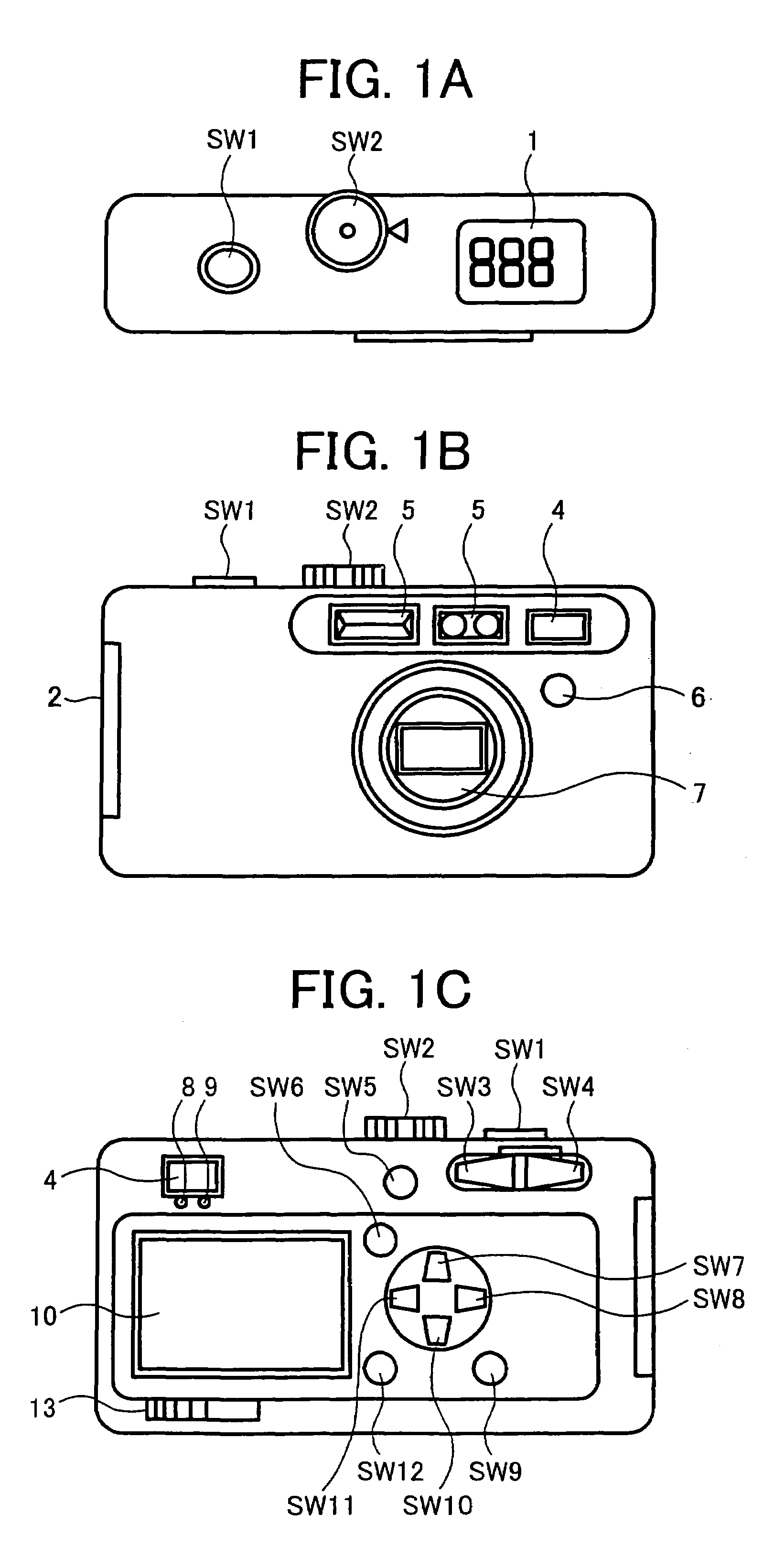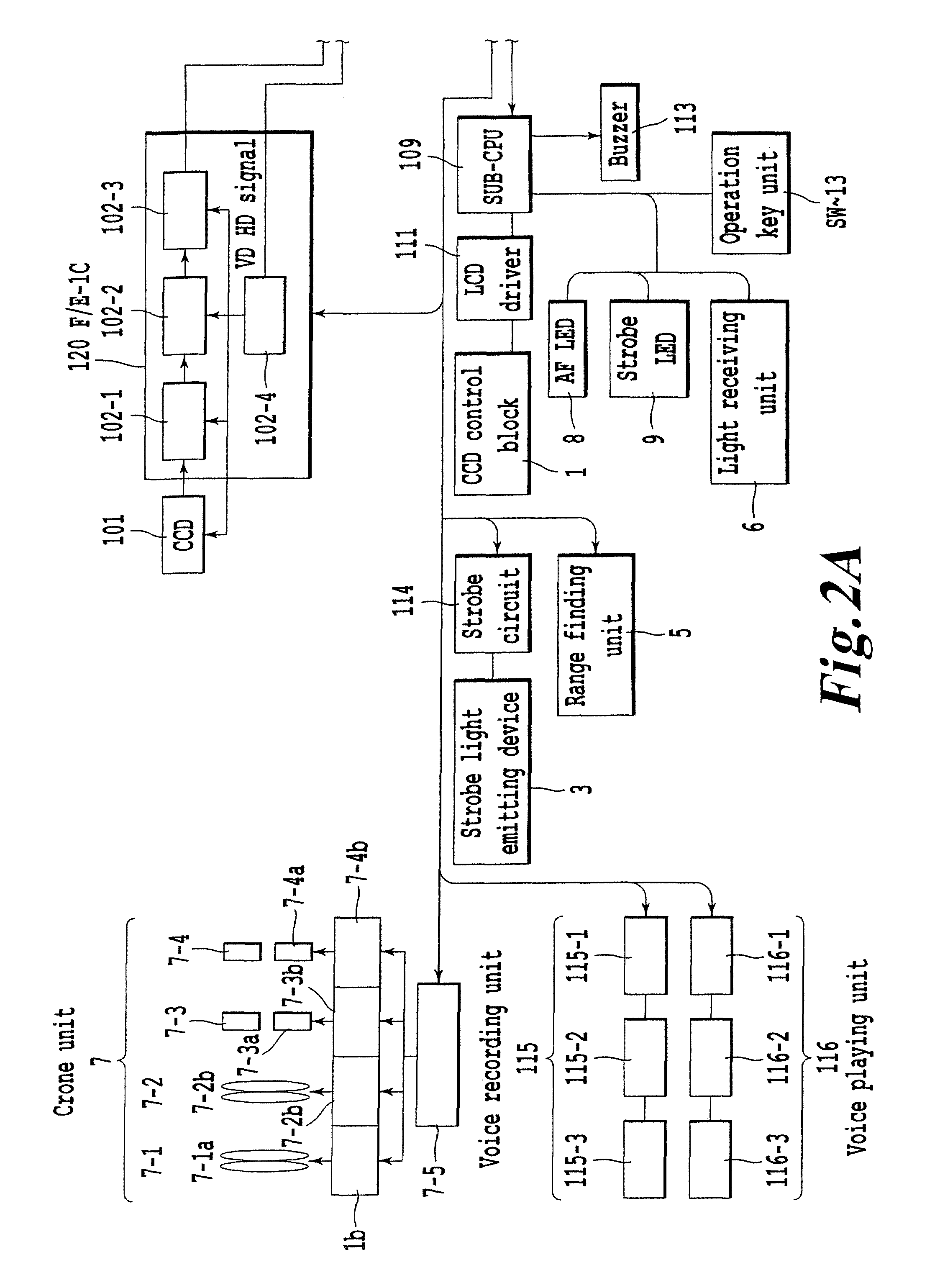Imaging apparatus and imaging method for reducing release time lag
a technology of imaging apparatus and release time lag, which is applied in the field of imaging apparatus, an imaging method, a program, and a recording medium, can solve the problems of increasing power consumption, increasing circuit area, and increasing cost, so as to reduce the release operation and reduce the release time lag , the effect of increasing power consumption
- Summary
- Abstract
- Description
- Claims
- Application Information
AI Technical Summary
Benefits of technology
Problems solved by technology
Method used
Image
Examples
first embodiment
[0026]FIG. 1A, 1B, and 1C illustrate the appearance of digital camera which is an example of imaging apparatus according to the present invention, respectively.
[0027]The digital camera according to the present invention comprises a camera crone unit 7 disposed in a camera body as shown in FIG. 1A to FIG. 1C. The camera crone unit 7 comprises a zoom optical system 7-1 having a zoom lens 7-1a for taking in an optical image of object and a zoom driving motor 7-1b, a focus optical system 7-2 having a focus lens 7-2a and a focus driving motor 7-2b, an aperture stop unit 7-3 having an aperture stop 7-3a and an aperture stop motor 7-3b, a mechanical shutter unit 7-4 having a mechanical shutter 7-4a and a mechanical shutter motor 7-4b, and a motor driver 7-5 for driving respective motors 7-1b to 7-4b. The motor driver 7-5 is controlled to be driven by the driving instruction from a CPU block 104-3 provided in an after-mentioned digital still camera processor 104 disposed in the camera body ...
second embodiment
[0063]In stead of measuring the elapsed time from the exposure period timing signal right after the release operation is conducted till the beginning of the exposure setup operation, as shown in FIG. 6, the elapsed time from the exposure period timing signal right after the release operation is conducted to the exposure setup operation is completed can be measured. As shown in the timing chart of FIG. 6, the elapsed time t3 from the previous VD till the setup of exposure to the F / E-IC 102 is completed is measured, and the remaining time t4 till the next VD is calculated, and then the judgment whether or not the VD reset is conducted by this calculated time t4. When the calculated time t4 is more than the predetermined time, as shown in FIG. 6, the exposure for recording can be started in the time of VD shown as the reference numeral (a′) which is output earlier than the time shown as the reference numeral (a), so that the shortening of release time lag can be achieved. The example s...
third embodiment
[0064]Next, the timing chart of FIG. 8 illustrating a third embodiment of the present invention will be described by comparing it with FIG. 7 illustrating its prior art.
[0065]FIG. 7 shows the same timing with FIG. 3 by the conventional method. The F / E-IC changes the operation mode of next exposures period by the data set up till the F / E-IC setup confirmation timing of the trailing edge of VD signal or the nearest thereof as described with reference to FIG. 3, and conducts the adjustment of exposure time by increasing and decreasing the number of horizontal synchronizing signals for the electric shutters, i.e. the number of the electric shutters. As described above, the description is given by adopting the tailing edge of VD signal as the F / E-IC setup confirmation timing.
[0066]For the prior art illustrated in FIG. 7, as shown in FIG. 3, the number of electric shutters (exposure time) for recording the still image set up by the CPU block at the processing event A are loaded inside the...
PUM
 Login to View More
Login to View More Abstract
Description
Claims
Application Information
 Login to View More
Login to View More - R&D
- Intellectual Property
- Life Sciences
- Materials
- Tech Scout
- Unparalleled Data Quality
- Higher Quality Content
- 60% Fewer Hallucinations
Browse by: Latest US Patents, China's latest patents, Technical Efficacy Thesaurus, Application Domain, Technology Topic, Popular Technical Reports.
© 2025 PatSnap. All rights reserved.Legal|Privacy policy|Modern Slavery Act Transparency Statement|Sitemap|About US| Contact US: help@patsnap.com



